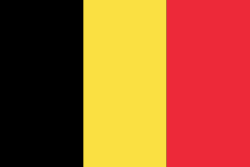VILLA SERVAIS
La Villa Servais, au cœur de Hal, est une demeure d’exception construite en 1847 à l’initiative du violoncelliste François Servais. Restaurée avec soin par la famille De Poorter, elle a retrouvé sa splendeur et son rôle de lieu de culture et de partage.
PRESENTATION
Conçue par l’architecte Jean-Pierre Cluysenaar, cette villa néo-palladienne s’inspire des influences artistiques et culturelles ramenées par François Servais de ses voyages. Dès son origine, elle est un centre de rencontres pour musiciens, artistes et intellectuels. La villa connaît successivement plusieurs vies : maison privée, quartier de soldats durant la Seconde Guerre mondiale, puis école de quartier jusqu’en 1980. Après des années d’abandon, elle est classée au patrimoine en 1986 et bénéficie d’une restauration minutieuse de 2016 à 2021, redevenant un espace dédié à l’art et à la culture.


